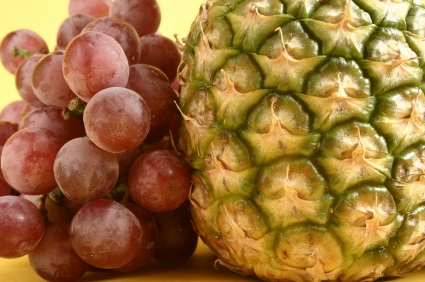
feed-image, l
(article, Stephanie Beechem)
Ah, wine country: rolling hills, gnarled rows of vines, sunshine. But wine critics and connoisseurs are less romantic; wine country, to them, means very specific regions around the world, dotted inside two planet-circling bands (one north, one south) between latitudes 30 and 50. Only grapes grown inside these bands, so the conventional wisdom goes, are suitable for successful winemaking. But now there are “new latitude” wine regions, located in regions where you might not think grapes could grow at all: Brazil, Thailand, and tropical areas of China and Argentina. The new-latitude region that’s received the most press of all — in Brazil, a mere 8 to 9 degrees from the equator — is so hot that coconuts grow alongside the grapes. [%image feed-image float=right width=300 credit="Photo: iStockphoto/arfo" caption="Grapes: The new tropical fruit?"] Both National Public Radio and the New York Times have reported on Brazil’s rapidly expanding wine culture in recent months, and both asked the same question: How is it possible that wine grapes can grow in such a hostile climate? In an article in the San Francisco Chronicle, the well-known British wine critic Jancis Robinson cites not only “advances in refrigeration and irrigation techniques” buoyed by state-of-the-art technology, but also “greater control over how and when vines grow” as the main reasons why such unlikely regions are now producing wine. And how do the wines taste? Robinson summed up a Brazilian wine thus: "The result, as far as my jetlagged palate could tell, is a perfectly respectable, deliberately modern, mass-market red wine." Grape production is markedly different in Brazil than in the traditional latitudes. In Europe and the United States, there's only one annual grape harvest; in new-latitude regions, Robinson writes, harvest cycles are controlled by carefully timed irrigation, pruning, and application of special crop regulators (hormones). These techniques allow a farmer to choose when and how often grapes will produce a crop. As a result, many Thai vineyards harvest twice a year, while at some Brazilian wineries, grapes are harvested continuously, with as many as two to three separate "gatherings" of grapes per month. This complete control, along with cheap land, cheap labor, and huge quantities of sunlight — more than 300 sunny days per year in Brazil, and almost as many in Thailand — explains the surge in corporate interest in these new wine regions. What with catching up in expertise and challenging the stigma of coming from a non-traditional region, it may take a while before new-latitude wines show up in your neighborhood store. But if technology keeps improving, it doesn’t seem so hard to imagine that “new latitude” may very well become the new Napa. Also on Culinate: A review of a book about how wine was saved for the world and an article about native grapes.

feed-image, l